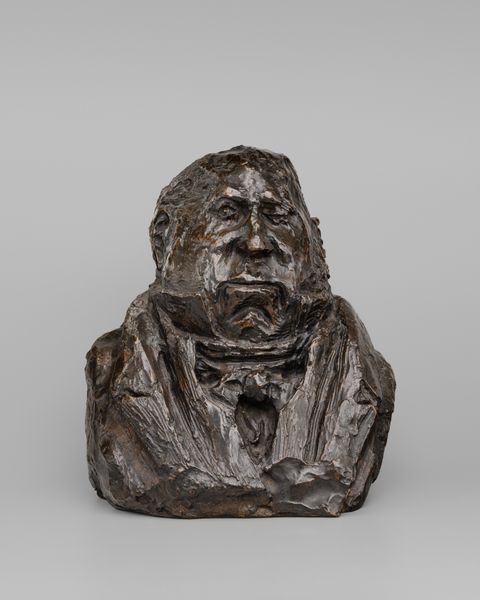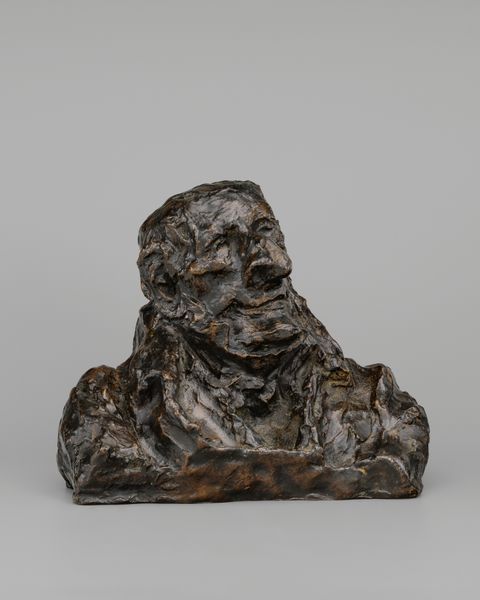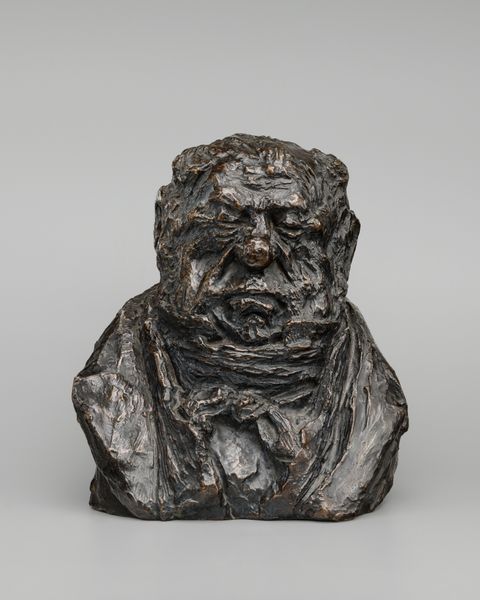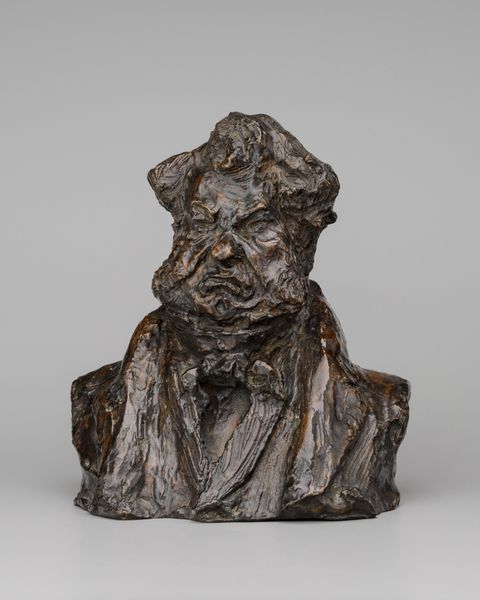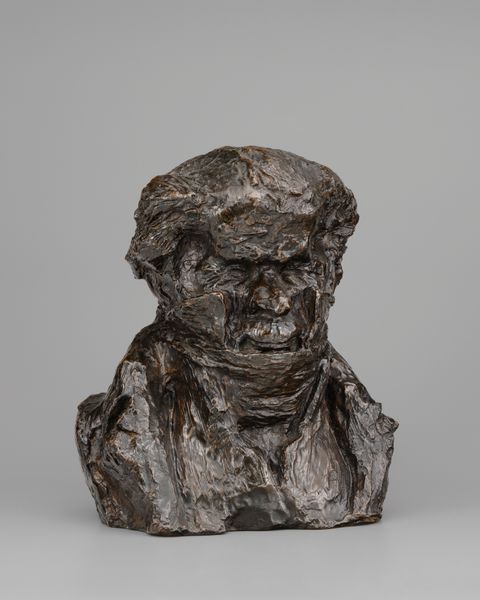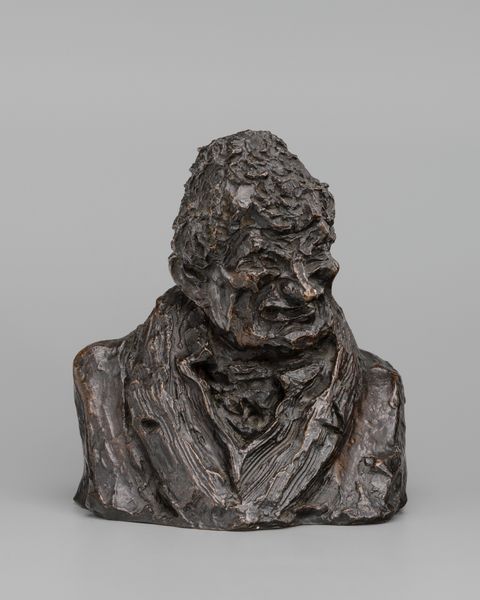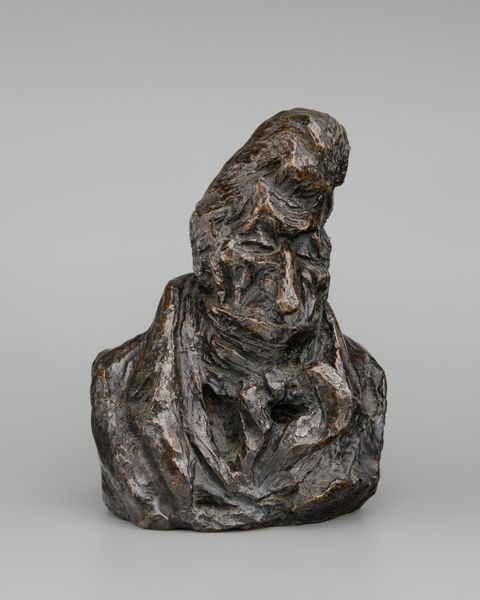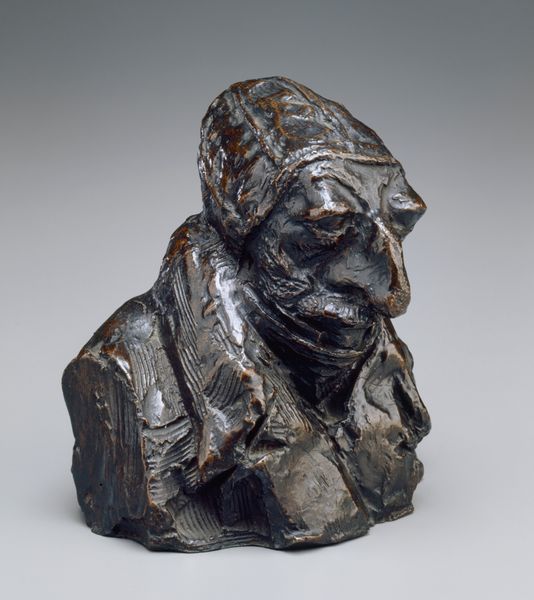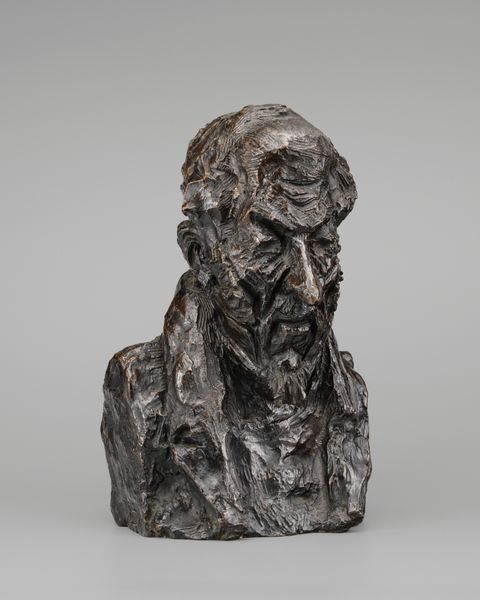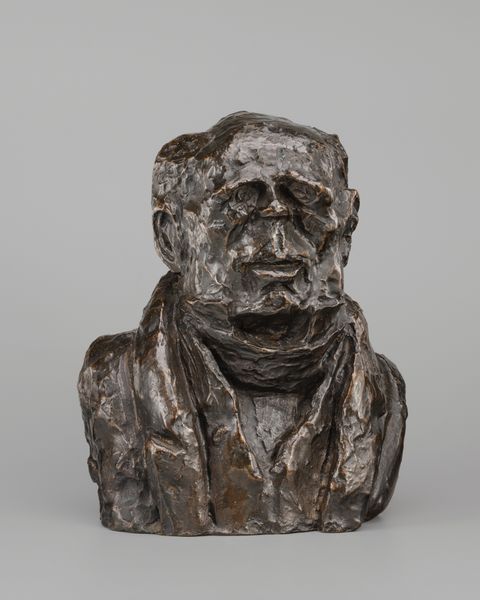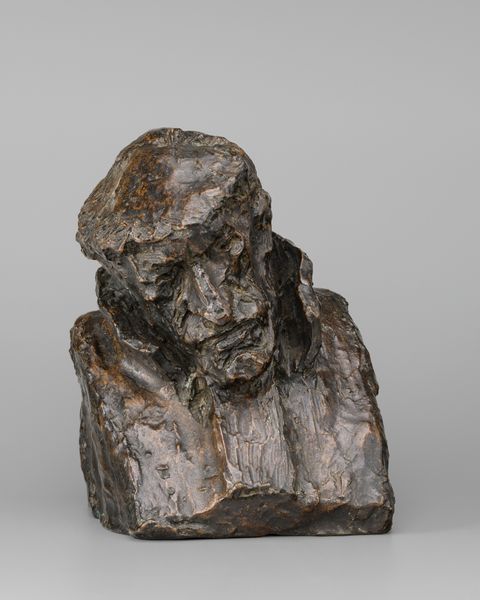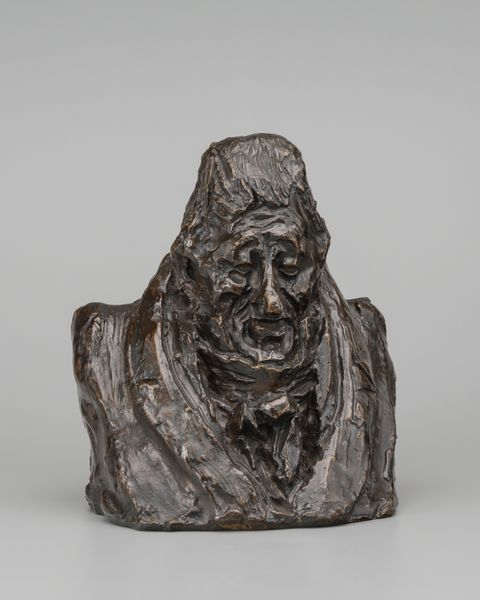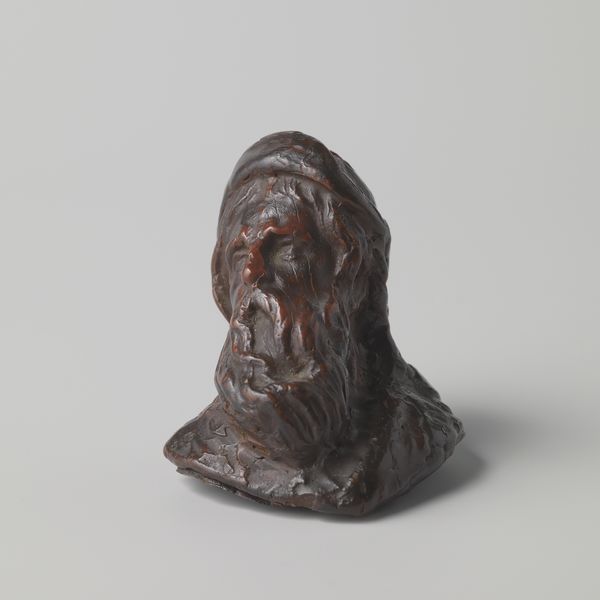
sculpture
#
3d sculpting
#
3d model
#
natural shape and form
#
textured surface
#
sculpture
#
textured
#
detailed texture
#
sculptural image
#
sculpting
#
sculpture
#
curved surface
Dimensions: overall: 12.1 x 14.6 x 11.1 cm (4 3/4 x 5 3/4 x 4 3/8 in.)
Copyright: National Gallery of Art: CC0 1.0
Editor: Here we have Honoré Daumier's "Jean-Marie Harlé, Père," a sculpture dating sometime between 1832 and 1850. The textured surface and almost caricatured features create a really powerful sense of the sitter's personality. What do you see in this piece, considered from its time? Curator: Well, looking at "Jean-Marie Harlé, Père," we see Daumier engaging with the emerging public sphere of 19th-century France. Sculptures like this weren't just private art; they were often exhibited in salons and, importantly, reproduced as lithographs. Daumier used this, and sculpture like this, as political commentary. Editor: So, this wasn't just a portrait, but also a kind of social statement? Curator: Precisely. The exaggerated features, as you pointed out, were a hallmark of his satirical style. It questions how powerful figures like Harlé were publicly presented and perceived. Daumier is actively participating in a public conversation, critiquing the established order. Consider its role in shaping public opinion. Editor: That’s fascinating! I hadn’t considered how the sculpture could be multiplied through prints, amplifying Daumier's message. Were such critical portrayals common at the time? Curator: While portraiture was ubiquitous, Daumier's overtly critical approach was quite unique, often pushing the boundaries of what was acceptable. This made his art both popular and controversial, playing a critical role in French visual culture. It questions what imagery is deemed fit for public consumption and its potential effects on societal dialogues. Editor: I’m seeing it now. Thinking about it as a public image that invites social critique opens up so much more than just admiring it as a sculpture. Thanks! Curator: Exactly. Understanding its place within the political and artistic landscape of its time is key to truly appreciating Daumier's genius and subversive contribution.
Comments
No comments
Be the first to comment and join the conversation on the ultimate creative platform.
